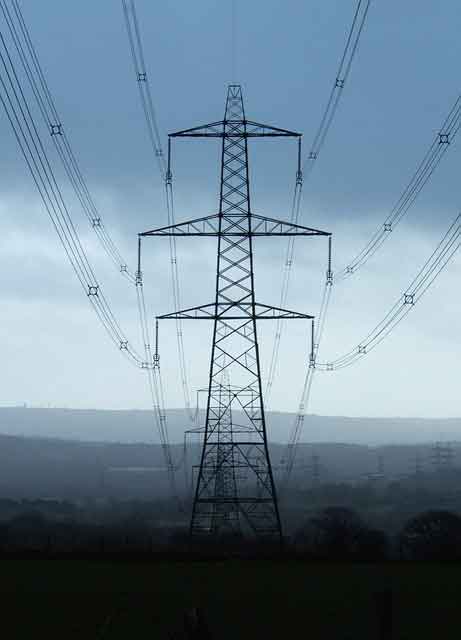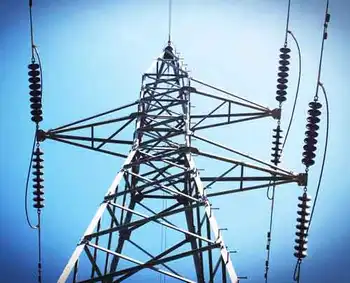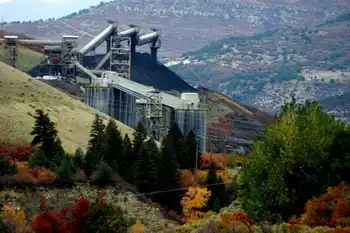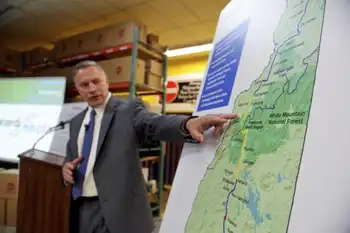Wind farm plans stir concern
By The Spectrum & Daily News
High Voltage Maintenance Training Online
Our customized live online or in‑person group training can be delivered to your staff at your location.

- Live Online
- 12 hours Instructor-led
- Group Training Available
"Why here," "Why us" and "Why now," were the three main questions posed by an audience of more than 300 people to representatives of the company that built Utah's first commercial wind farm in Spanish Fork, and is planning a similar development in southern Iron County on Bureau of Land Management land.
Wasatch Wind Senior Project Development Manager Christine Mikell gave a presentation, including a visual simulation of how the 1,400-acre wind farm might look, outlining the benefits of wind power with its declining costs, the price uncertainty of coal and natural gas, active state and federal initiatives and economic development potential.
The anticipated 80 to 100 megawatts of power generated by the wind farm will come from wind that has been tested for the last year by two towers that show there is ample supply. For the project to move forward, an average of 16- to 19 mile-per-hour winds in most areas must be documented. Data collecting will continue for the next two to three years to determine if the wind is consistent enough for the proposed farm to move forward with the National Environmental Policy Act and acquisition of conditional use permits.
"If we don't have it (data), there will be no project," Mikell said.
If Julie Woods had her way, lack of adequate wind data suits her just fine.
"We don't understand if wind power is efficient enough to be put in our backyard because wind power fluctuates," Wood said. "The wind farm will destroy our mountains, wildlife habitat and ruin our views for a developer that answers to its investors and is backed by California companies.
"There needs to be more research done because the grid they are taking about goes from Kansas to California and can have power put into it anywhere from any source and taken out just the same and wind power fluctuates so much that it won't solve the energy problem until how to store it is figured out," she added.
The 265-foot towers will have three nearly 80-foot blades each, which spin a shaft connected to a generator that makes electricity that will be transported via seven miles of transmission lines. While the project size and exact number of turbines have not yet been determined, and are dependent on the available capacity on the Rocky Mountain Power Transmission Grid, as well as the negotiation of a power purchase agreement with power utility customers, the project may produce energy for up to 80,000 households.
Al Brajnikoff lives two miles south of the proposed farm site in addition to being a board member of the Bumble Ridge Wildfire Council. He has a vested interest in the development, he said.
"I don't have a problem with it as long as the aesthetics work out with it and there is not a wildfire issue," Brajnikoff said.
Besides increased wildfire hazards, decreased property values, water contamination, destruction of scenic views, unwanted noise, light pollution and infringement on hunting rights were concerns also voiced at the meeting.
"My main concern is the disruption to wildlife because there are five Bald Eagles in the area," said Scott Pace of New Harmony. "I also think it will destroy the gorgeous views and if there is a fire, it will be difficult to drop air retardant around the blades that will end up being coated a bright orange.
"I think it's just ridiculous," he added. "There are better places than the mountains to put these big eye-sores."
Sam Krevetz said the visual blight is worth the trade-off in clean power.
"If we don't look at alternative energy then we will be faced with smog coming from more coal plants," he said. "I'd rather look at a turbine than have to pay for natural gas imported from a foreign country."
Wasatch Wind is developing the largest wind farm in Wyoming along with approximately 15 supporting projects throughout the Intermountain West, including the Harmony Mountains. It has yet to produce a development plan, but may do so as soon as next month, said Mikell.
"It's not a done deal. We have a long way to go but we can't do it without the support of the people," Mikell said.
Sparking dialogue is what Wasatch Wind Permitting Manager and Environmental Specialist Lin Alder said made the community meeting worthwhile.
"I'm pleased that there is a very healthy dialogue in the sense that many people are for it and many people have concerns, so the fact that we have a healthy dialogue I consider is a success," Alder said.











